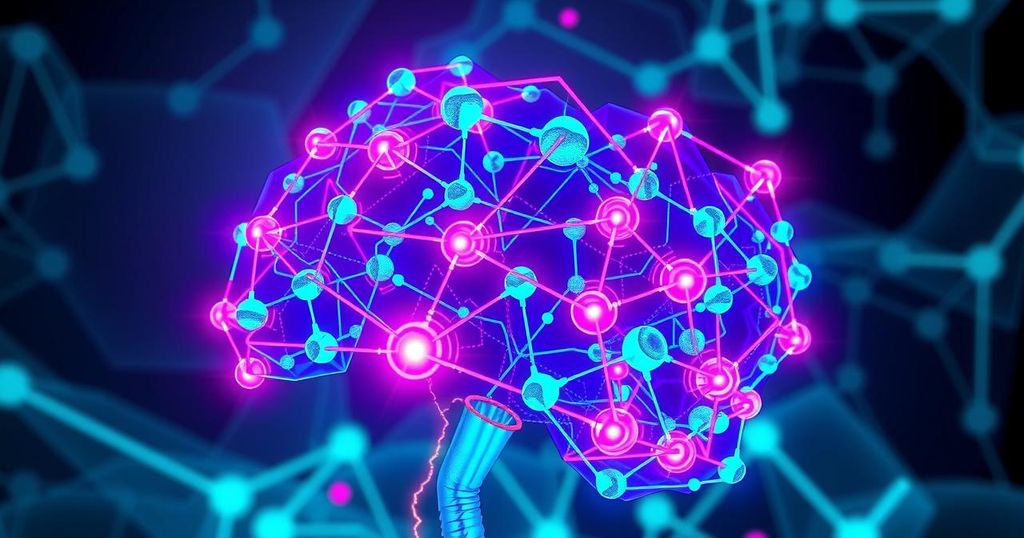Science
EUROPE, FOOD INDUSTRY, GOOGLE DEEPMIND, HE, JOHN JUMPER, JUMPER, LINKE, LIVE SCIENCE DAILY, NATURE, NOBEL COMMITTEE FOR CHEMISTRY, NORTH AMERICA, RESEARCH, SCIENCE, SUSTAINABILITY, SWEDEN, UNITED STATES, UNIVERSITY OF, UNIVERSITY OF WASHINGTON, VENTURE CAPITAL, WASHINGTON
Liam Kavanagh
0 Comments
2024 Nobel Prize in Chemistry Honors Pioneering Research in Protein Structures
The 2024 Nobel Prize in Chemistry was awarded to David Baker, Demis Hassabis, and John Jumper for their groundbreaking work in understanding and designing protein structures, particularly through computational advancements like AlphaFold2 and Rosetta.
In an exciting revelation for the world of science, the Nobel Prize in Chemistry for 2024 was awarded to three groundbreaking scientists: David Baker, Demis Hassabis, and John Jumper. Their work has dramatically reshaped our understanding of proteins, the essential building blocks of life, by revealing what some are now calling a ‘completely new world of protein structures.’ This award totals 11 million Swedish krona—or roughly $1.06 million.
David Baker, a biochemistry professor at the University of Washington, will take home half of the prize money for his incredible innovations in computational protein design. This tools allows researchers to create novel protein structures that exhibit properties never seen in nature before.
Hassabis and Jumper, leading minds at Google DeepMind, share the other half for their work on predicting protein structures. Their AI marvel, AlphaFold2, unveiled back in 2021, can accurately predict the 3D structure of proteins from their DNA-encoded amino acid sequences, which has transformed the way we understand protein interactions in living organisms.
Heiner Linke, chair of the Nobel Committee for Chemistry, spoke at the announcement ceremony in Sweden, emphasizing the crucial role proteins play in life. He stated that each protein consists of tens of thousands of atoms, arranged in complex ways that determine the protein’s function. “To understand how life works,” Linke highlighted, “we first need to understand the shape of proteins.”
Proteins assemble from individual amino acids, which are dictated by DNA’s three-letter sequences. This creates a challenge: predicting how these proteins fold into their functional 3D structures. Hassabis and Jumper tackled this issue with AlphaFold2, which skyrocketed the accuracy of structure predictions from a mere 40% to an impressive 90%.
Since its debut, AlphaFold2 has provided invaluable insights into myriad processes involving proteins, from antibiotic resistance to previously unnoticed protein functions, including enzymes capable of breaking down plastic. It’s essentially opened a treasure chest of biological discovery.
On a different yet complementary front, Baker’s research focuses on designing proteins by envisioning their ideal 3D shapes and then calculating the amino acid sequences required to create them. Back in 2003, he birthed Rosetta, a computer program that ingeniously combines snippets of existing amino acid data, optimizing these sequences to match desired shapes.
“David Baker opened up a completely new world of protein structures,” stated Johan Åqvist, a Nobel Committee member, at the announcement. He added, “It’s only your imagination which sets the limit for what you can do here.” Baker’s advancements have helped design countless proteins, serving varied roles such as counteracting the COVID spike protein and developing sensors for environmental opioids.
Post-announcement, Baker shared his feelings with Hans Ellegren, Secretary General of the Royal Swedish Academy of Sciences. He expressed that he felt “very excited and very honored,” attributing his achievements to the influence and inspiration drawn from fellow researchers in the field.
In the grand scheme, as scientists delve deeper into protein structures and their functionalities, the potential for new discoveries and applications seems boundless, reflecting a profound shift in the landscape of biochemistry. The future has never looked more promising.
The 2024 Nobel Prize in Chemistry heralds a new era of protein discovery and design, recognizing the monumental contributions of Baker, Hassabis, and Jumper. With their innovative work, particularly through AlphaFold2 and Rosetta, they’ve unveiled critical insights into protein functionality, potentially revolutionizing biochemistry. Their achievements shine a light on the limitless possibilities of protein engineering, thus revealing a promising horizon for future scientific exploration.
Original Source: www.livescience.com




Post Comment